solution-of-triangles-5
Illustration 9:
Prove that centroid, orthocenter and circumcenter of a D are collinear and centroid divides the line joining orthocenter and circumcenter in ratio 2:1.
Ans:
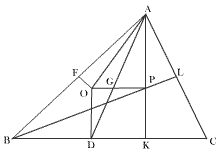
Fig (15)
Let O and P be circumcenter and orthocenter respectively. Draw OD and PK ^ to BC.
Let AD and OP meet in G.
Now the DAGP and DDGO are equiangular which is clearly due to the fact that OD and PK are parallel lines.
Now OD =
=
= RCosA
Also AP = 2RCosA
So, by similar triangles,
![]()
So, point G is centroid of the D
Again by the same proposition
![]()
So, centroid divides line joining circumcenter to orthocenter in ratio 1:2.
Bisectors of theangles:
If AD is the angle bisector of ÐA then AD ![]()
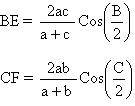
How?
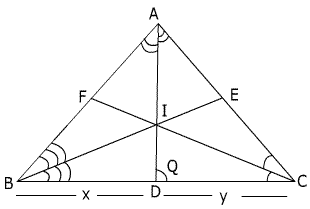
Fig (16)
Now area of DABD + area of DADC = area of DABC
Þ ½ AB.AD Sin (A/2) + ½ AC.AD Sin (A/2) = ½ AB.AC SinA
Þ AD (AB Sin (A/2) + AC Sin (A/2)) = AB.AC.2Sin (A/2) Cos (A/2)
Þ AD (b+c) = 2bc Cos (A/2)

How?
Now in DABD

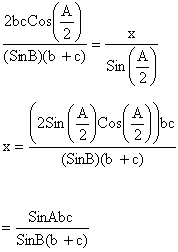
Now by using sine rule.
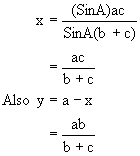
Medians:
If AD is a median then
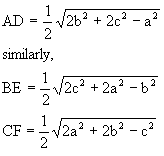
How?
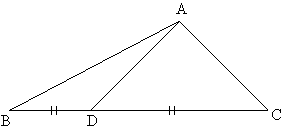
Fig (17)
In DADC use cosine law
So AD2 = AC2+DC2-2AC.DC.CosC
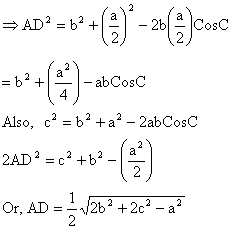
Illustration 10
In a DABC prove that ![]() where AD is the median through A and
where AD is the median through A and
AD^AC
Ans:
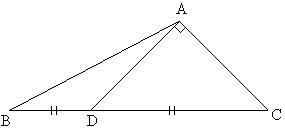
Fig (18)
In DADC
AD2 = DC2-AC2

But
![]()
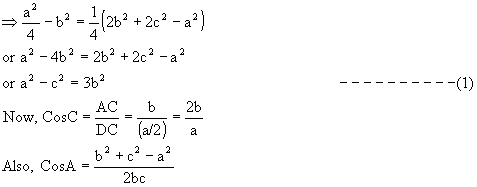

![]()
Solution of triangles
When any 3 of the 6 elements (except all 3 angles) of a D given, the triangle is completely known. This process is called solution of triangle.
Case 1: When the sides a, b, c are given then how to find?
![]()
Similarly B and C can be obtained.
Case 2: When two side’s b, c and included angle A are given then how to find?
![]()
![]() So, B and C can be evaluated.
So, B and C can be evaluated.
The third side is given by a ![]()
Case 3: When 2 sides’ b and c and angle B (opposite to side b) are given
1) If angle B is acute.
a. No triangle possible if b<cSinB
b. One right angled D, right angled at C if b=cSinB
c. two D’s are possible if cSinB<b<c
How?

So, for real values of a

\ If b<cSinB no triangle is possible.
Now if b=cSinB
Then ![]()
So, a right angle triangle with angle c= 900 is possible
Now, ![]()
![]() Is positive (B is acute)
Is positive (B is acute)
But if ![]() is also be positive
is also be positive
Then ![]()
Or c2>b2
Or c>b,
So, if CSinB<b<c
Then 2D’s are possible.
2) If ÐB is obtuse: only one D is possible if b>c
How?
CosB= ![]()
Or ![]()
a = ![]()
Since B is obtuse CosB<0
So, a cannot be ![]() as it is less than zero.
as it is less than zero.
So, only possibility is a = ![]() but this will be
but this will be
Positive only if ![]()
Or c2<b2
Or c<b so, one D is possible if b>c.